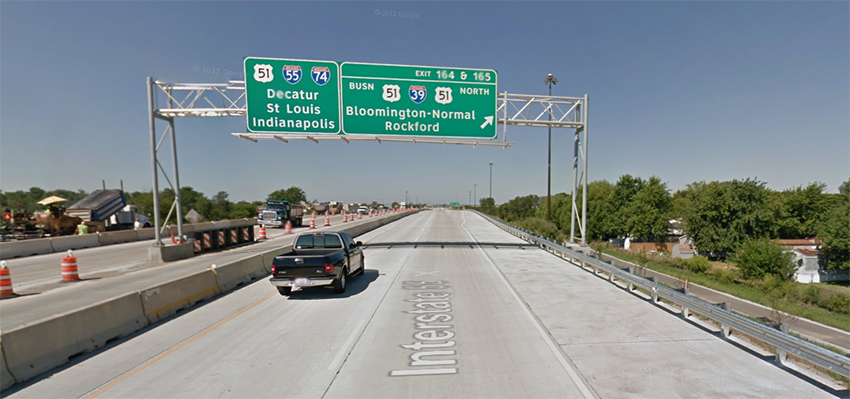For most Illinois State students, holiday breaks begin and end in the same place—Interstate 55.
Headed north to Chicago or south toward St. Louis, I-55 can be … boring. But if you look closer, you’ll discover landmarks filled with Hollywood trivia, fascinating local history, and natural beauty.
That’s what alumna LuAnn (Aiello) Cadden ’93 has done in her new book Traveling Through Illinois: Stories of I-55 Landmarks and Landscapes Between Chicago and St. Louis. It took her and co-author Ted Cable more than three years to research, but Cadden’s I-55 investigation really began as a college student in the early 1990s, traveling on I-55 between her home in Springfield to the Illinois State campus.
“I found it relaxing,” Cadden told STATEside. “I’d get off work, go up to ISU, and get to watch the sunset. In that one hour, you could starting watching the sunset at the beginning and still be watching the last little hints of light when you got to Bloomington-Normal.”
I-55 is a stretch very familiar to Redbirds past and present. Today, more than 56 percent of all students are from Cook County or the collar counties, not to mention thousands of Chicago-based alums.
Cadden’s book rattles off hundreds of individual stories and trivia, broken down by mile marker, between Chicago and St. Louis. For many Illinois State students or alums, the landmarks between Chicago and exit 165 (Main Street/Normal) will be especially interesting, including these nuggets:
- The iconic “Those aren’t pillows!” scene in the 1987 road trip comedy Planes, Trains, and Automobiles was filmed at the Sun Motel, located at mile marker 233 near Braidwood. Though the hotel was said to be in Kansas in the film, it was actually just a few hundred feet off I-55.
- Ever wonder what’s up with that giant mansion at mile marker 170 (on the left, if you’re southbound) right before you get to Illinois State? It’s Duncan Manor, and it was built in 1875 by a livestock businessman who was eager to show off his majestic property. A recent owner, who later began renovations on the house, once drew 2,500 visitors over one weekend of pre-renovation tours. Looking for a project? Duncan Manor is currently for sale.
- Arsenal Road (exit 245) just south of Joliet was named for the Joliet Army Ammunition Plant (the Joliet Arsenal), which during World War II was the largest and most advanced ammunition plant in the world. Production wound down in the 1970s, and it’s now a national tallgrass prairie.
Beyond the countless road trips up and down I-55, Cadden and her co-author’s research for Traveling Through Illinois included lots of interviews with local historical societies, homeowners, and business owners. They wanted to talk to real people, and not rely on what they could find by Googling. That approach paid off, like the time their chance visit to tiny Waggoner in southern Illinois revealed a visit from Steven Spielberg, whose wife Kate Capshaw had family there.
“We tried to find information people may have never heard before,” Cadden said.
But gathering all the factoids was tricky too. Their book has two halves—southbound and northbound—with different entries and details in each half. And three years of research meant that things could change while they were writing, like how new wind farms kept popping up alongside I-55.
“When you move one mile marker’s story, it affects all the rest,” she said. “Writing a novel is a little easier, because you can just cut and paste sections. Something like this you have to be really methodical.”
Cadden, a transfer student at Illinois State, majored in English with a concentration in writing. She met her husband, Michael Cadden D.A. ’96, during her senior year. They now live in St. Joseph, Missouri, where LuAnn Cadden is a writer and educator. And the I-55 book isn’t her foray into interstate history; she and her co-author previously published Driving Across Missouri: A Guide to I-70.
The books put to good use skills she picked up in her previous career as a naturalist for the Missouri Department of Conservation, writing magazine and research articles and interpretive trail guides. In that role, Cadden says, she’d try to build interesting connections between the facts and their meaning.
“In our book (about I-55), we try to do the same thing,” Cadden said. “We don’t want just facts in our book. We do try to tie in emotion with the information.”
Traveling Through Illinois was published this year by The History Press. You can order the book online.
Ryan Denham can be reached at rmdenha@IllinoisState.edu.



